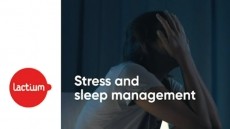New data for ingredient combo opens additional healthy aging avenues

Both of the ingredients in the combination formula — HMB, or β-hydroxy β-methylbutyrate, and vitamin D3, have a long history in the marketplace. Vitamin D's history extends back to the 1920s, whereas HMB was first discovered in the early 1990s via work done at Iowa State University.
Older ingredients, new data
The ingredient combo and the science backing it are the work of Missoula, MT-based TSI, which has marketed myHMB, the branded form of the ingredient, for a number of years. In June TSI brought Metabolic Technologies, the original developer, fully in house.
A recent study of HMB combined with vitamin D3 showed that the combination significantly boosted muscle health in an elderly cohort. The goal was to show a benefit for seniors who are not exercising regularly.
While the researchers were not advocating for that approach, nor were seeking to position the ingredient combination as some sort of magic pill, designing a study with that cohort in mind does reflect market realities. Many older consumers have goals to exercise more than they actually do, and some are constrained from working out as much as they’d like because of various ailments.
The recent study, published in September in the Journal of Gerontology, backs earlier research on HMB in isolation and with other ingredients. The new data has increased interest in the HMB-D3 ingredient combo and is opening up new avenues said TSI president Larry Kolb.
“We have seen a lot more interest in HMB. We used the study as outreach for use in an elderly population. This study really validates the efficacy for this usage,” Kolb told NutraIngredients-USA.
New indication: ‘muscle health’
TSI uses the term ‘muscle health’ to describe what they’re after. It’s a subtly different positioning than many core sports nutrition ingredients (a space HMB plays in as well) in that many of those are seeking to support consumers who have already embarked on their fitness journeys. ‘Muscle health’ aims at maintaining muscle mass and healthy muscle function in those older consumers who, for reasons mentioned above, are falling short of exercise recommendations.
“We define ‘muscle health’ as preserving your muscle mass as you age. Some of our customers have been on the fence when ti comes to muscle health and this new data has helped them to move forward,” Kolb said.
Measurements keyed to endpoints
Keeping that target in mind played into what the research team chose to measure and how they went about it, said researcher Lisa Pitchford, PhD, who is a staff scientist with MTI Biotech and an associate professor at Iowa State. The study used measures like grip strength and times in the so-called get up and go test, in which a subject rises from a chair and covers a certain distance while walking. Both of these measure things that are relevant to elderly consumers who want to maintain independence as they age.
That study design played into one of the quirks of the results, namely that the HMB-D3 combo did not show significant additional benefits with the group that was exercising. There were three groups in the study: a sedentary placebo group, and two groups that received the intervention, one of which was sedentary and another that was following an exercise routine.
Pitchford said the tests chosen tended to have natural limiting factors.
“The lack of additional benefit while exercising is really more a reflection of the measurements. We were looking at physical functioning, not at increasing sports performance. For the most part these measurements reached a ceiling, and weren’t hard enough to show an additional benefit for the exercise group. For example, in the get up and go test you reach a limit, and you’re not going to do it faster unless you are running across the room,” she said.
How HMB-D3 combo supports the middle of the road elderly population
“We do have data on HMB paired with a strength training program,” Kolb said. “In that sphere HMB performs very well. It shows strength increases and a reduction in body fat percentage. We don’t yet have those high intensity studies in older adults.”
Pitchford said the new data does show that HMB, especially when paired with vitamin D3, is switching on a system that tends to go quiescent in older adults.
“What we do know is that HMB does turn on the signals for muscle protein synthesis. That’s a limiting factor in the aging muscle,” Pitchford said.
Without without that system being revved up, so to speak, even the bigger protein intakes often recommended for older adults might not help as much as might be assumed, she added.
“That extra, unused protein would just get burned as fuel or stored as fat,” she said.
















